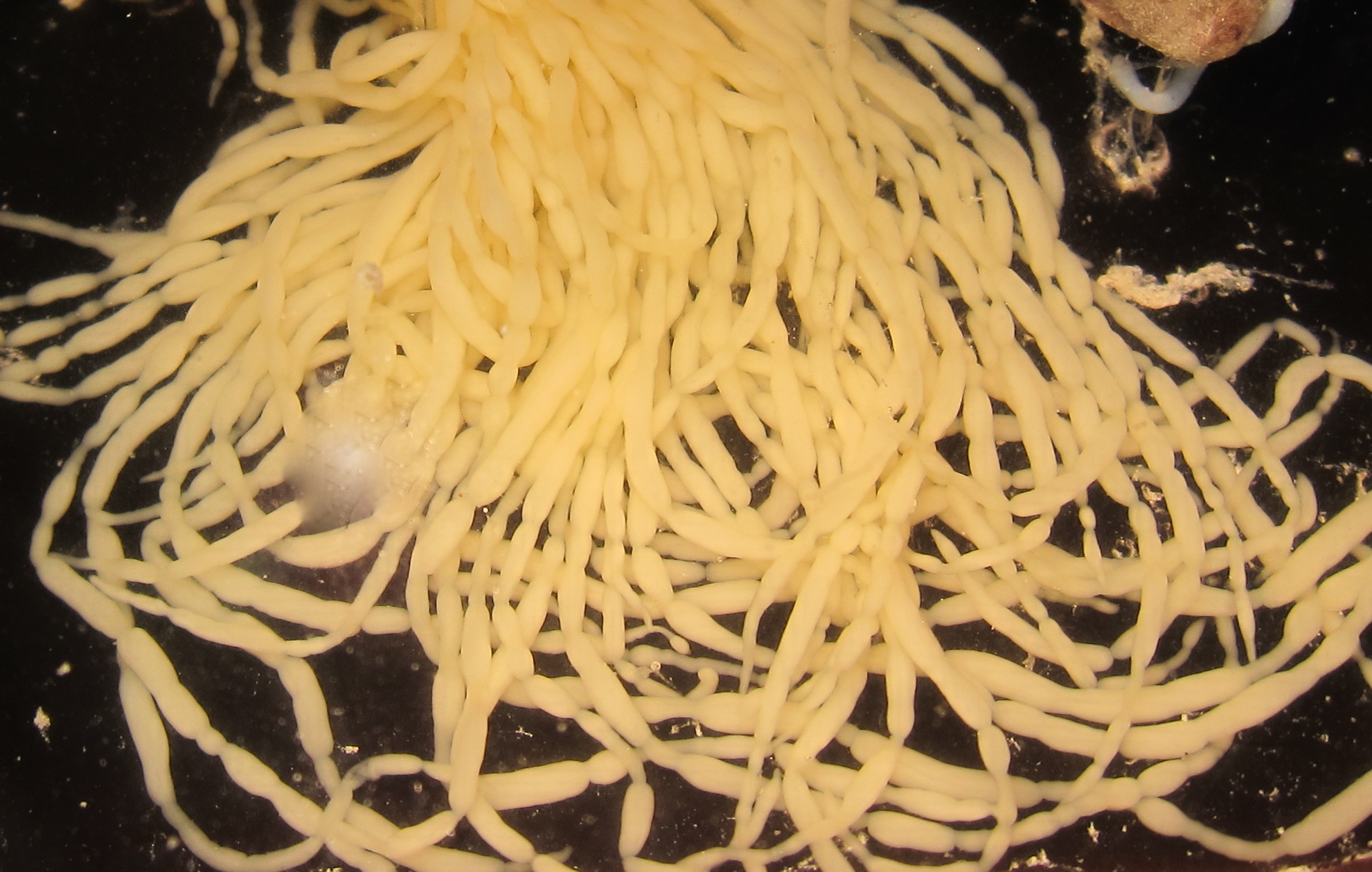Reproduction and Life Cycle
H. impatiens are gonochoristic and reproduce via spawning. When conditions are optimal, eggs and sperm are simultaneously released into the water column. Figure 6 shows a close up of Holothuria Impatiens gonads. Once fertilization has taken place and auricularian larvae is developed that uses cilia for locomotion.
 
 Figure 7: Close up of Holothuria impatiens gonads Figure 7: Close up of Holothuria impatiens gonads
Depending on the species, the larvae will spend approximately 70 days in the water column as plankton (Smith 1997). During this time will transforms into a doliolaria before settling in a safe place to under coral rubble boulders or amongst seagrass beds. Here it will grow into a juvenile sea cucumber. Again, depending on the species, it can take between 4 to 5 years to mature (Smiley at al. 1991). The life span of H. Impatiens is unknown, but previous studies of alternate sea cucumber species predict that their life span can be up to 8 years long (Kerr 2003).
Figure 8: Sea cucumber life cycle |